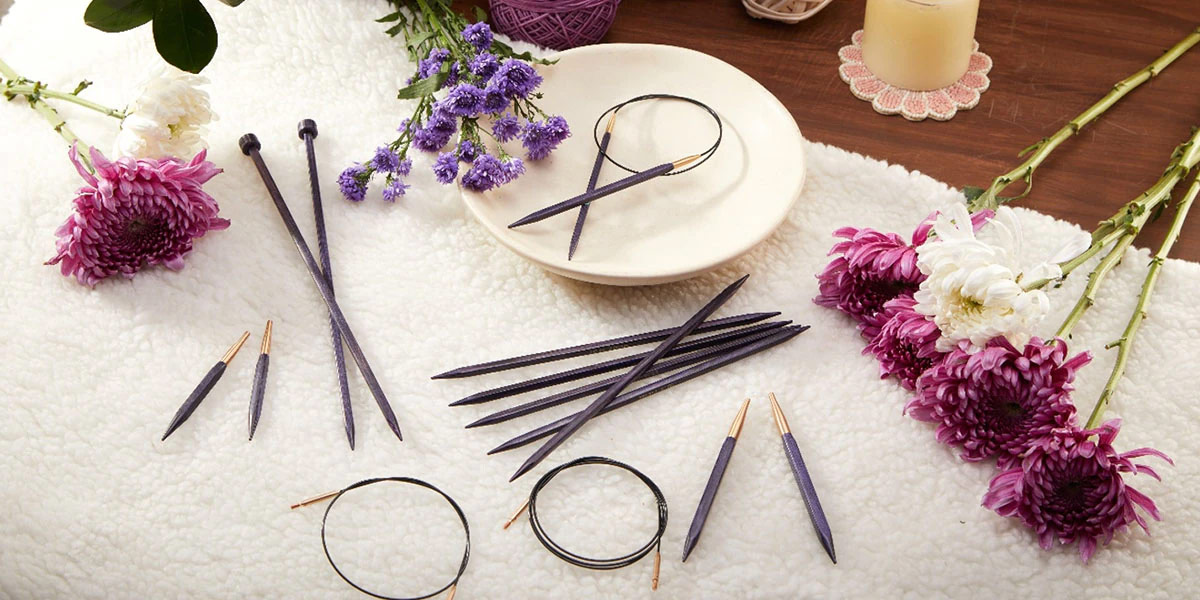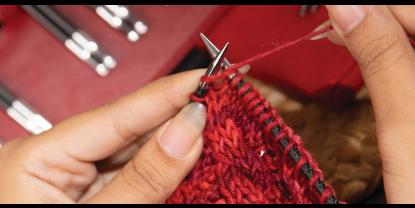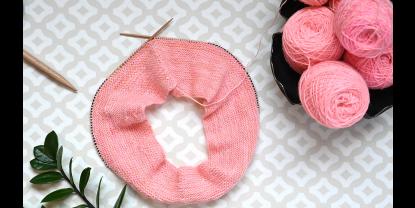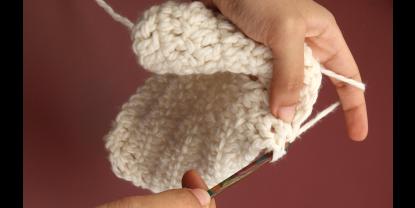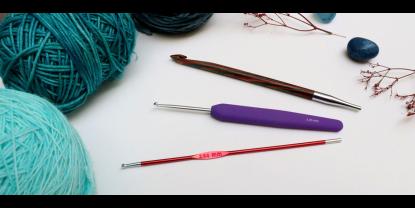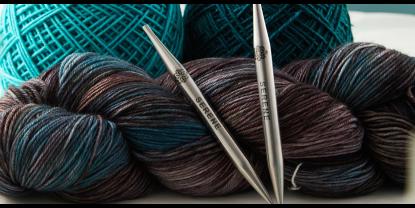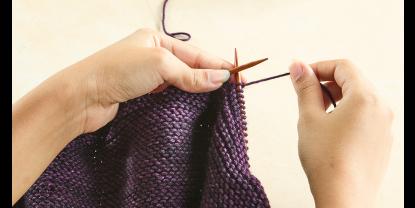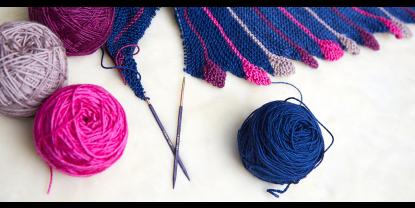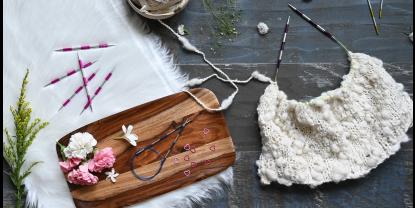I learned to knit when I was 7 years old. Little did I know how important it would become to me. Knitting creates a place of enjoyment, creativity and friendship. At the time, I was taught with inexpensive materials and plastic knitting needles. Neither of these materials was ideal since they are not conducive to creating a smooth glide for stitches. (Stitch “glide” adds to the meditative enjoyment that knitting with quality yarn provides) Despite those drawbacks, I grew to love knitting. If I were to teach today, I would provide the person learning to knit with the best knitting tools and yarns possible - right from the beginning. The reason is simple: Quality materials result in enjoyment, a better outcome and a desire to do more.
I was fortunate in that I enjoyed repetitive work, and knitting is repetitive. That is one of its greatest advantages. It encourages repetitive work with the hands. This often leads to an experience of calmness since most people sit quietly in order to accomplish it.
1. Learning to Knit with Trials and Errors
I do wish I had first learned from more experienced knitters. Because I hung in there, there was trial-and-error in my early years and some frustration with things like dropped stitches or uneven tension. I gradually learned just by repeatedly doing it – the primary way to grow a craft or any talent. I taught myself to read patterns by going over them again and again. It would have been great to have a knitting mentor. That’s something that is more easily available today, as great online sites such as Ravelry and top-notch yarn sellers provide great tips and tutorials via blogs and YouTube.
However, my stumbling block also gave me resilience to stick with those complex rows, so I won’t regretfully look back but take it as lesson number #1.
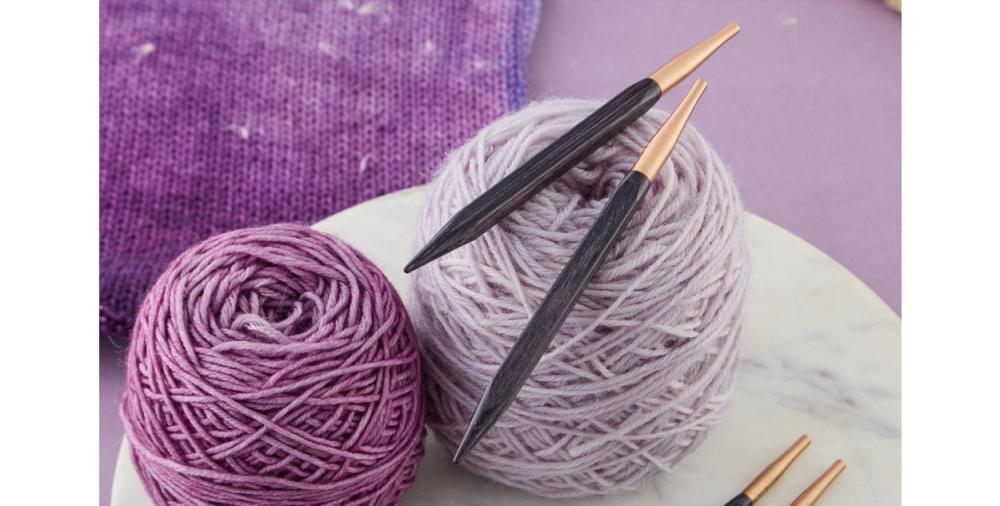
2. Understanding Knitting Needles and Matching with Yarn
Coming to something I keep close to heart. I wish I had known more about the characteristics of different types of knitting needles. Some help increase speed – and are best suited to more experienced knitters. Some are ideal for beginners in that they help a new knitter keep a steady pace without fear of the yarn or stitches dropping off easily.
Here’s an example of a smart piece of advice: When knitting with fine yarns, such as mohair or sock-weight merino, it’s a good idea to use needles that allow the yarn to slip along the needle easily. An experienced knitter may choose stainless steel needles for speedy knitting, while less experienced knitters should use a smooth wooden needle to make sure that thin stitches do not get away from them. That’s why buying tools from a company that has a variety of needle types is important. In fact, since the time I learnt to knit, new materials: carbon fiber (aerospace grade) have been added among knitting needles. Plus, the new mini sizes (2”) paired with mini cables have changed knitting those small circumferences.
3. Matching Yarn to Project Success
The other thing that I wish had been more prevalent 20 years (or so) ago was information about the characteristics of yarns and sheep breeds. A lot of time and money is wasted if a new knitter doesn’t realize how important choosing the right yarn type is for a successful outcome. It’s the yarn fiber, yarn weight and even the right shade or colorway. Also, not forgetting the project.
For a hand-knit sweater, merino wool in DK/ worsted-weight is a good choice for fall and winter; however, the same wool in lighter sock weight is best for warmer weather. For socks, yarn that is durable and soft is a better choice, so merino-polyamide yarn works best. Merino-silk combines two softest and coziest fibers to create yarn that is beautiful to knit with, something like heirloom projects.
For instance, if someone wishes to make something lightweight – with drape and flow, it is important to understand the behavior of finer weight yarn – such as sock weight merino. For newbies, larger projects with many stitches can get tedious and discourage enjoyment. Suggesting a smaller, lightweight project, such as a cowl, can give them a satisfying result quickly and make them want to do more. Here, a DK weight or worsted-weight yarn is a good option. They are just the right weight to learn.
4. Start Small, Learn Fast
Many new knitters get so excited about the beauty of the craft that they might want to jump into a big project. Encouraging someone new to the craft to “start small and simple” and with the right weight yarn results in a finished project that helps grow their confidence and sense of accomplishment. However, it must be balanced with new opportunities. Colorwork knitting patterns & techniques are a good starting point.
5. Knitting as Meditation: The Calm in Every Stitch
While I did not realize it at the time, I enjoyed knitting because of the meditative state that it induced. Concentrating on the work in my hand allowed me to block out other intrusive thoughts and put me in a good mood. In that way it is a fine independent endeavor and it creates a calm that is good for the body as well as the mind. You can easily find lots of information and tutorials online about the healing effects of hand work such as knitting.
6. Building a Knitting Community: The Joy of Crafting Together
Another, equally important, aspect of the craft is the community that is created when knit and crochet people come together. Friendships are formed, enthusiasm is shared, learning takes place and fun results. That is one of the reasons that small independent knitting stores are so important. They bring together kindred spirits and the passion of an involved group. If at all possible, seek out a knitting store near you and see what’s on hand in terms of classes and get-togethers. If you don’t have a store close by, consider creating your own group by reaching out through safe sites such as Ravelry. Meeting up once a week can create more than just knitwear. It creates community – something we all need.
So, this is it for the time. I wish every new knitter success in every project!
Author Profile: Phyllis Howe
Phyllis Howe has been a devoted knitter for over 30 years, transforming yarn into cherished handmade treasures. Her needles have explored every corner of the knitting world and still seek new adventures, utterly enchanted by every new project. What Phyllis loves most isn't just the finished objects, but the meditative rhythm of the craft and the vibrant community it creates.
Through her writing, she shares three decades of wisdom. Her voice carries the warmth of someone who genuinely loves both the craft and the people who practice it.


